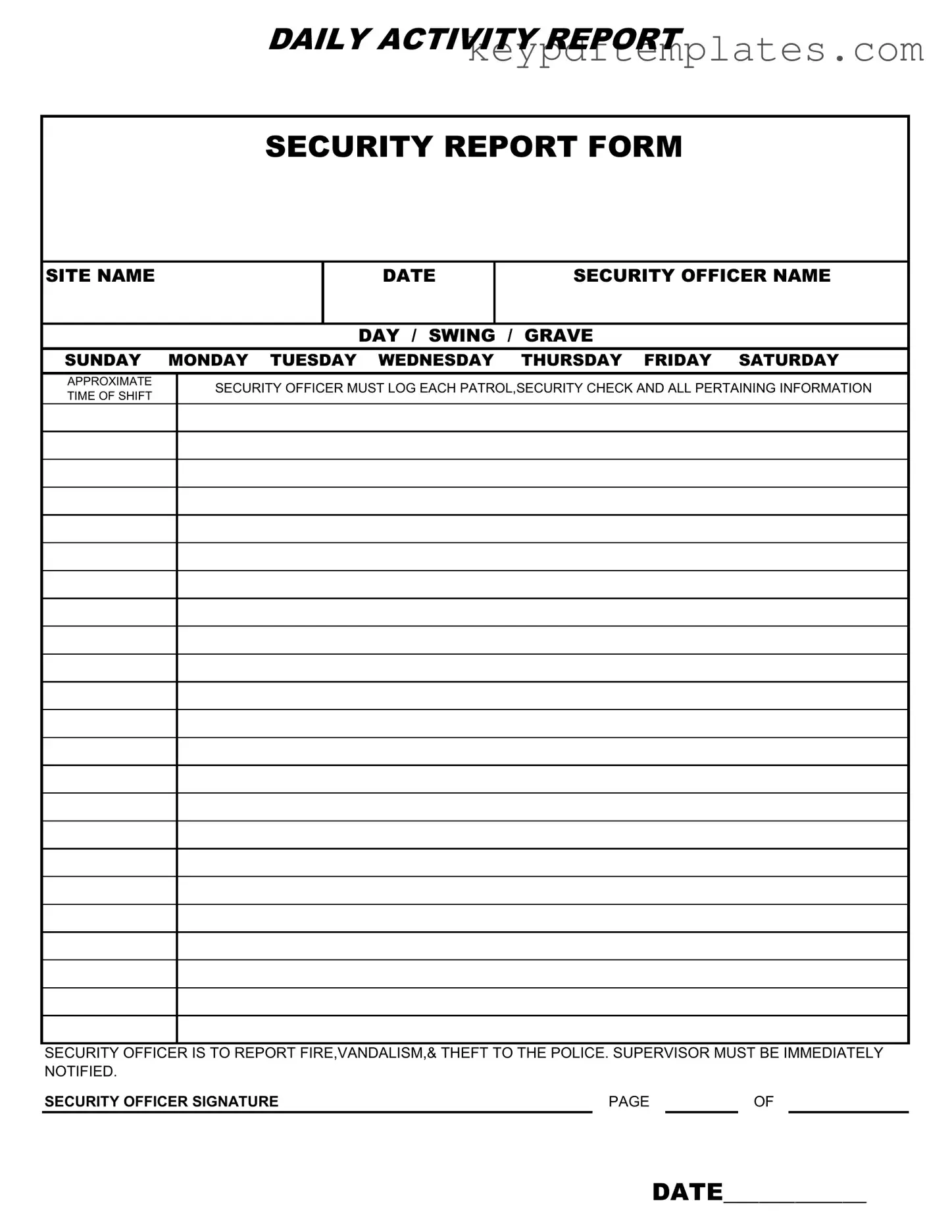Get Security Guard Daily Report Sample Form
The Security Guard Daily Report Sample form is a structured document designed for security officers to record their daily activities and observations. This report includes essential details such as the site name, date, and the officer's name, along with a log of patrols and security checks. It serves as a vital tool for ensuring accountability and communication regarding incidents like fire, vandalism, or theft.
Modify Document Online
